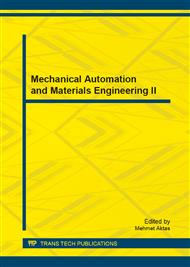p.339
p.344
p.349
p.354
p.359
p.364
p.370
p.375
p.379
Concurrent Core Test Based on Partial Test Set Reusing
Abstract:
A novel concurrent core test approach is proposed to reduce the test cost of SoC. Before test, a novel test set sharing strategy is proposed to obtain a minimum size of merged test set by merging the test sets corresponding to cores under test (CUT).Moreover, it can be used in conjunction with general compression/decompression techniques to further reduce test data volume (TDV). During test, the proposed vector separating device which is composed of a set of simple combinational logical circuit (CLC) is designed for separating the vector from the merged test set to the correspondent test core. This approach does not add any test vector for each core and can test synchronously to reduce test application time (TAT). Experimental results for ISCAS’ 89 benchmarks have been rproven the efficiency of the proposed approach.
Info:
Periodical:
Pages:
359-363
Citation:
Online since:
June 2014
Authors:
Price:
Сopyright:
© 2014 Trans Tech Publications Ltd. All Rights Reserved
Share:
Citation:


